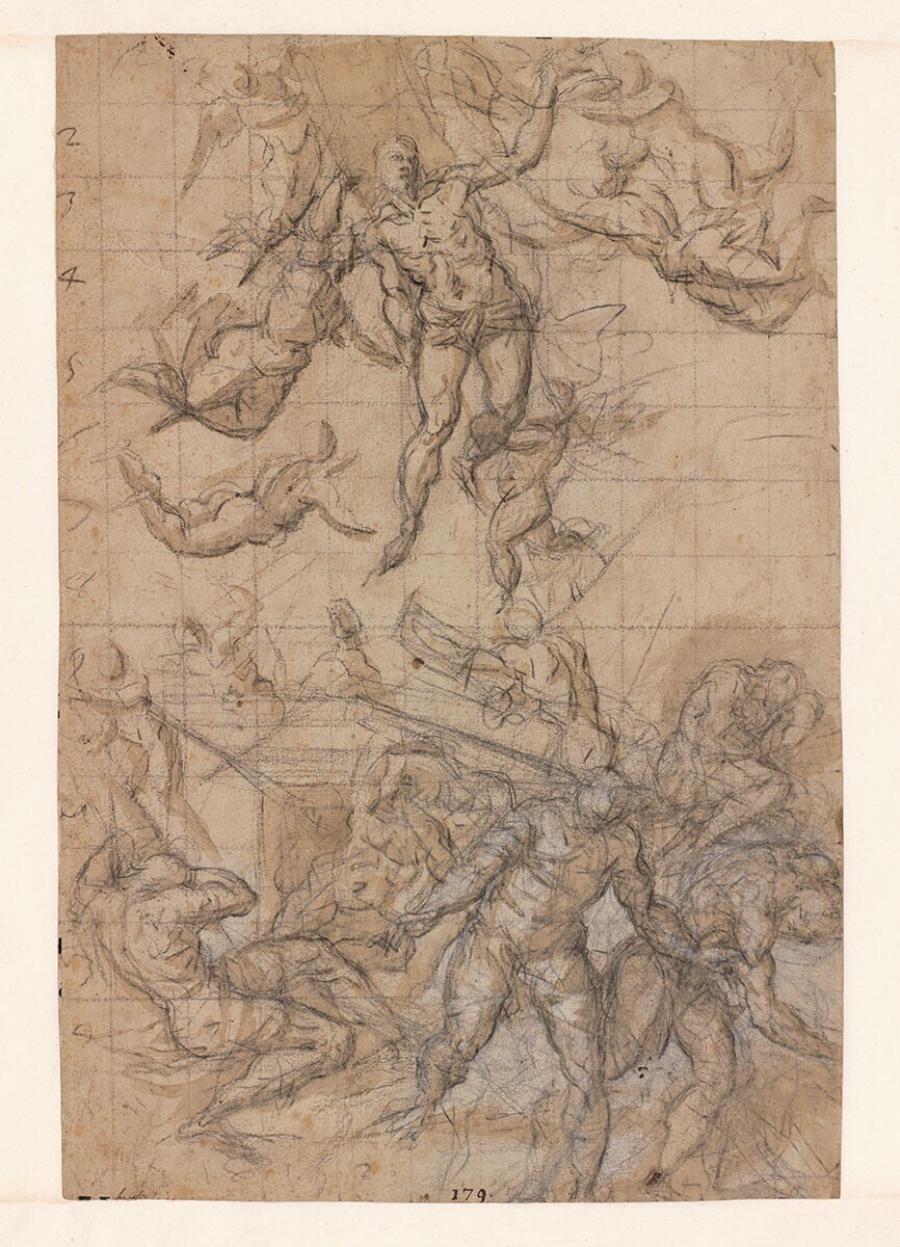Specifications
| Title | The Resurrection of Christ |
|---|---|
| Material and technique | Black chalk, brown wash, white heightening, squared |
| Object type |
Drawing
> Two-dimensional object
> Art object
|
| Location | This object is in storage |
| Dimensions |
Height 411 mm Width 277 mm |
|---|---|
| Artists |
Attributed to:
Antonio Aliense
Previously attributed: Aurelio Luini |
| Accession number | I 394 recto (PK) |
| Credits | Loan Stichting Museum Boijmans Van Beuningen (former Koenigs collection), 1940 |
| Department | Drawings & Prints |
| Acquisition date | 1940 |
| Creation date | in circa 1550-1620 |
| Watermark | Unidentified figure in a circle, with letter V on top (55 x 38 mm, below right of the centre, on P6 of 9P, vH) [see image] |
| Inscriptions | 'Aurelio Luini' (below left, largely cut off), '179' (below centre, pen and brown ink), ‘1, 2, 3, 4, 5, 6, 7, 8, 9, 10, 1, 2, 3, 4, 5, 6’ (left, black chalk), ‘1, 2, 3’ (above left, black chalk), '[text] 57' (verso, below right, pencil, in a square), 'OBCA' (verso, above right, pencil), '19' (verso, above left, pencil) |
| Collector | Collector / Franz Koenigs |
| Mark | F.W. Koenigs (L.1023a) |
| Provenance | Art dealer Julius W. Böhler (1883-1966), Lucerne; Franz W. Koenigs (1881-1941, L.1023a), Haarlem, acquired in 1929 (Domenico Tintoretto); D.G. van Beuningen (1877-1955), Rotterdam, acquired with the Koenigs Collection in 1940 and donated to Stichting Museum Boijmans Van Beuningen |
| Exhibitions | Venice/Florence 1985, no. 38; Rotterdam 2009 (coll 2 kw 3) |
| Internal exhibitions |
De Collectie Twee - wissel III, Prenten & Tekeningen (2009) |
| Research |
Show research Italian Drawings 1400-1600 |
| Literature | Tietze-Conrat 1944, no. 6; Aikema/Meijer 1985, no. 38, ill. |
| Material | |
| Object | |
| Technique |
Washing
> Wash
> Drawing technique
> Technique
> Material and technique
Washing
> Wash
> Drawing technique
> Technique
> Material and technique
Highlight
> Painting technique
> Technique
> Material and technique
Squared
> Squaring
> Drawing technique
> Technique
> Material and technique
Squared
> Squaring
> Drawing technique
> Technique
> Material and technique
|
| Geographical origin | Italy > Southern Europe > Europe |
| Place of manufacture | Venice > Veneto region > Italy > Southern Europe > Europe |
Do you have corrections or additional information about this work? Please, send us a message























